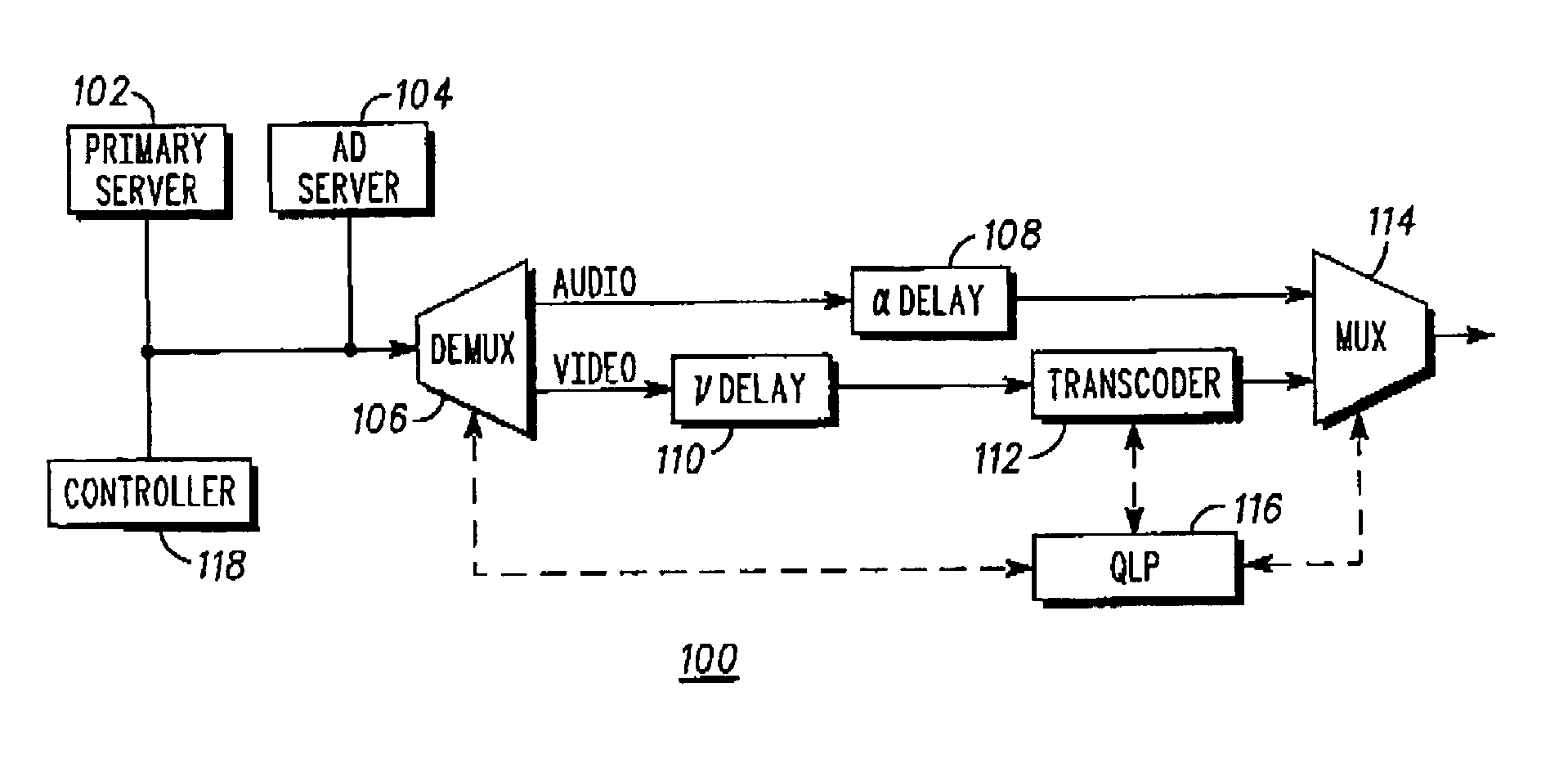Audio splice process for digital Ad insertion
a digital ad and audio splicing technology, applied in the field of digital broadcast signal processing, can solve the problems of accumulative errors, audio distortion, complex splicing, etc., and achieve the effect of avoiding accumulative errors, and avoiding underflow or overflow
- Summary
- Abstract
- Description
- Claims
- Application Information
AI Technical Summary
Benefits of technology
Problems solved by technology
Method used
Image
Examples
Embodiment Construction
[0019]The following references are hereby incorporated by reference in their entireties: (1) Vincent Liu, “Splice Operation for ASPEN”, Jan. 8, 2002; (2) GIC-616, U.S. patent application Ser. No. 09 / 872,783, “Splice Point Processing in an MPEG-2 Multiplexer”; (3) SCTE DVS380, “Digital Program Insertion Splicing API”; and (4) ISO / IEC JTC1 / SC29 / WG11 “CODING OF MOVING PICTURES AND ASSOCIATED AUDIO” (a commonly known standard), all of which have been previously filed with U.S. Provisional Patent Application No. 60 / 489,825.
[0020]Although the present invention will be illustrated below primarily in conjunction with MPEG-2 transport streams, the present invention is more broadly applicable to MPEG-2 program streams as well as to packet-based data streams generated in accordance with standards other than MPEG-2. These other standards include asynchronous transfer mode (ATM), transmission control protocol / Internet protocol (TCP / IP), and frame relay. The term “transport stream” or “stream” as...
PUM
 Login to View More
Login to View More Abstract
Description
Claims
Application Information
 Login to View More
Login to View More - R&D
- Intellectual Property
- Life Sciences
- Materials
- Tech Scout
- Unparalleled Data Quality
- Higher Quality Content
- 60% Fewer Hallucinations
Browse by: Latest US Patents, China's latest patents, Technical Efficacy Thesaurus, Application Domain, Technology Topic, Popular Technical Reports.
© 2025 PatSnap. All rights reserved.Legal|Privacy policy|Modern Slavery Act Transparency Statement|Sitemap|About US| Contact US: help@patsnap.com



